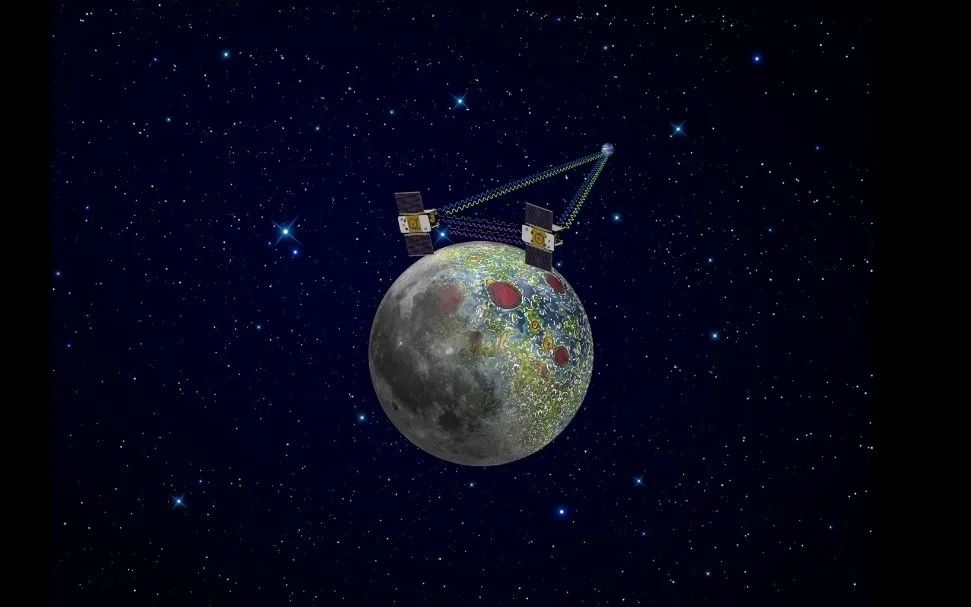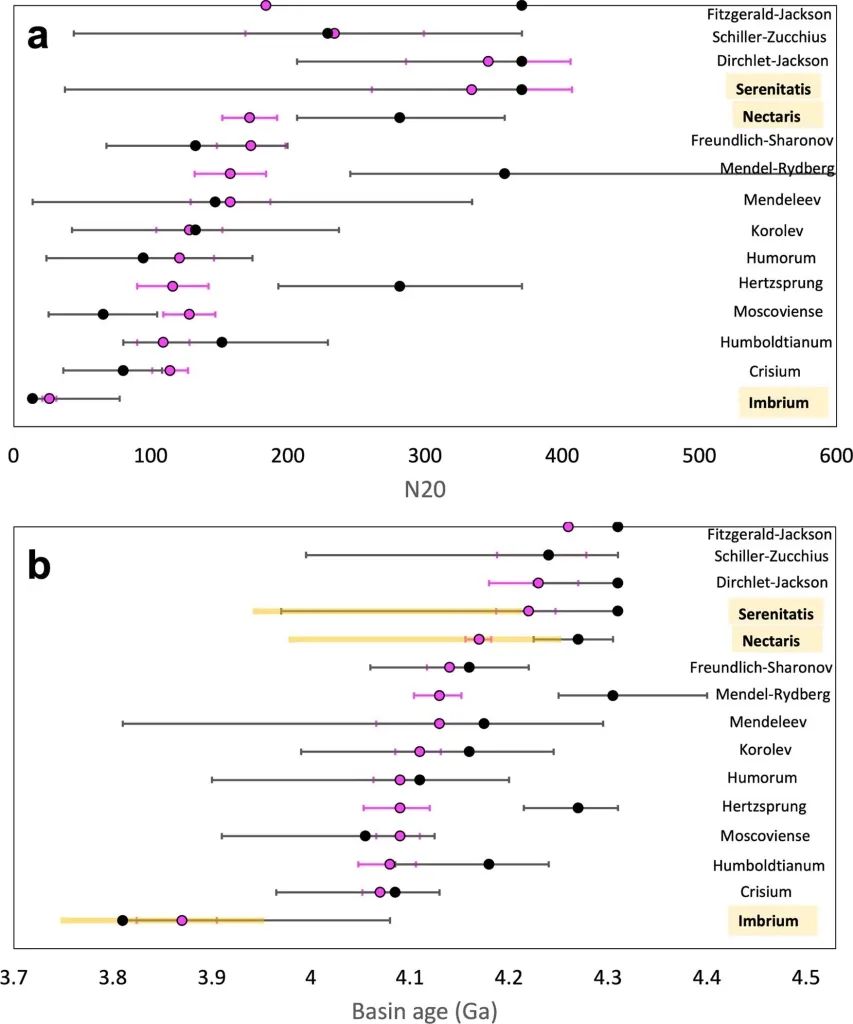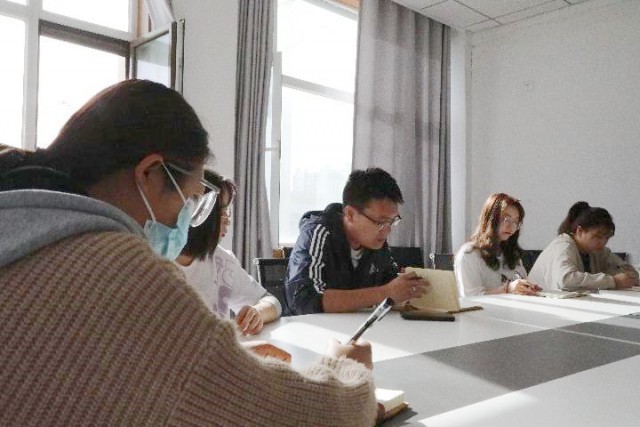NG: Moon -shell pores based on gravity data records the history of the moon table impact into a pit history
Author:Institute of Geological Earth Time:2022.08.28


The collision activity between celestial bodies is a very common phenomenon in the entire solar system. Especially within 1 billion years after the formation of the solar system, this impact activity is the most active. Early impact activities have important guiding significance for us to explore our in -line planet livable (Wiggins et al., 2022), the origin of the continental crust (Johnson et al., 2022), and the evolution of atmosphere. However, due to the strong weathering and sector movement, the impact records on the planet are rarely preserved. Fortunately, the impact records on the moon are relatively complete, and it is very similar to the source of the impact of the earth. Therefore, studying the impact history of the moon can provide reference and reference for studying the impact history of solar planets. At present, the main means to study the history of the lunar pits are the age data of the impact pit statistics based on remote sensing observation and the age data of Apollo returning samples. Based on this, two types of impact flocked models are formed: the impact flocked model of the index attenuation and ~ 4.1 -3.8 GA's advanced bombing model. However, due to the overlapping space of the impact, the subsequent impact may cover the previously formed impact pit. Therefore, this statistical method will underestimate the impact flux, which will affect the impact of the annual accuracy.
In 2011, the Gravity Recovery and Interior Laboratory (Gravity Recovery and Interior Laboratory (Grail) was launched in 2011. (E.G., Wieczorek et al., 2013). This data provides gravitational constraints for identifying an early hidden impact pit and corrected impact flux (E.G., Neumann et al., 2015).

Figure 1 NASA's gravity recovery and internal structural research laboratory (Grail) use two satellite to measure the lunar gravity field concept diagram (picture source: NASA/JPL-Caltech)
Studies have found that compared to the young impact basin (the impact pit with a diameter of ≥200km is called the impact basin), the shell pores of the ancient impact basin on the moon are small. These small impact incidents will pressure the lunar shell pores (Wahl et al., 2020). Based on this fact, the Massachusetts Institute of Technology's post -doctoral Ya Huei Huang (2022) and their collaborators based on the lunar shell porosity model obtained by gravity data, and counted the relationship between the peculiarity of the pits and the pores of the moon shell. The history of rebuilding the lunar pits and the history of the pores of the moon shell has evolved.
The research results of huang et al. (2022) show that: The density of the impact pit with a diameter greater than 20km) is manifested with a negative correlation between the pores of the moon shell, and between the pores of N (200) and the pores of the moon shell It is positive (Figure 2). This shows that large impact activities can increase the degree of moon shell pores, while small impact activities will pressure the real moon shell. The author then established an analysis model to simulate the evolution of the pores of the shell throughout the month. The model setting the initial moon shell porosity is 10%. By adjusting the formation of the formation of the large basin, the model that is most consistent with the current observation of the current observation is finally obtained. From the perspective of simulation, the average pore rate of the moon shell has gone through the process of increased first and then decreased: early large -scale impact activities increased the degree of moon shell pores, up to 20%, and later impacts continued to press the moon shell pores , Until today, the porosity of the monthly shell is ~ 9%(Figure 3). However, the author did not give the physical mechanism that reduced the pores of the moon shell first, and the moon shell pore degree obtained by Grail did not consider the effect of overflowing pressure on the closure of pores. The number of impact pits. In addition, the results of the model indicate that most of the lunar impact pots were formed during the 4.3 ~ 4.1 GA period, which was earlier than the "late bombing" hypothesis; The total amount of (20 to 200 km impact pits) is twice the previous statistics (Figure 4). However, the method of impacting pits speculated by the porosity model is largely affected by the impact flux model used.

In Figure February, the porosity (A) and the impact pit density (b) of the high ground shells (A). The white circle is a minor impact pit, and the black circle is the annual impact pit. Pay attention to the region with the density of the storm, Antarctic-Eitken Basin and the density gradient of the moon shell less than 5kg M-3km-1 (Huang et al., 2022)

Figure 3 The Moon Shell Pole of the Moon Shell Pole of the Moon Shells (A) and SPA today (B) (Huang et al., 2022)

In April, a part of the glimmer of the globe (a) calculates the value of the impact pit density N (20) based on the observation pores model, and (b) the age statistics of the basics of the porosity model of the observation. Black round represents the results calculated based on the porosity model, the pink circle represents the results of the impact pit, and the orange thick line represents the basin age obtained by the Apollo sample (Huang et al., 2022)
Huang's work provides an important physical means of geological age (xiao, 2022) for our research on the geological age of the moon. In addition, a recent article on Nature Communications reveals the possible life environment of the moon by studying the history of the lunar impact history and the evolution of pore rate evolution. The study found that early impact activities can increase the pores of the shell, and then increase the pore water and rocks. The contact area between the between accelerate the chemical reaction rate and provide sufficient energy for the origin of life (Wiggins et al., 2022). This method can also guide us to explore the impact history and the origin environment of planets such as Mercury, Mars and other planets. Main references (sloping up and downward view)
Huang y h, soderblom j m, minton d a, etc.
Johnson T E, Kirkland C L, Lu Y, et al. Giant Impacts and the Origin and Evolution of Contirens [J] .nature, 2022, 608 (7922): 330-335.
Neumann G A, Zuber M T, Wieczorek M A, Et Al. Lunar Impact Basins Revealed by Gravity Recovery and Interior Laboratory Measurements [J] .science Advances, 2015, 1 (9): E1500852.
Wahl d, Wieczorek M A, Wünnemann K, et al. Crustal Porosity of Lunar Impact Basins [J]. Journal of Geophysical Research: Planets, 2020, 125 (4): E2019je006335.
Wieczorek m a, neumann g a, nimmo f, et al. Et al. Crust of the moon as seen by grail [j]. Science, 2013, 339 (6120): 671-675.
Wiggins s e, Johnson B c, colorins g s, et al. WideSpream IMPACT-GENERATED POROSITY in Early Planetary Crusts [J]. Nature Communications
Xiao Z. Moon ’s Crustal Porosity Records Impact History [J] .nature Geoscience, 2022, 15: 512-513.
Writing: Jiang Yan, Xu Changyi/Di Star Room

Beautiful editor: Chen Feifei
School pair: Wanpeng
- END -
"Post -90s" return home for entrepreneurial youth: a network cable connects small town and the world

Xinhua News Agency, Lanzhou, June 14th. Question: Post -90s returning home to star...
Following the smart home, the robot has also been split, Hikvision will gradually split the high -gr

Text/Yang JianyongFor a long time, Hikvision's operation has maintained a steady g...